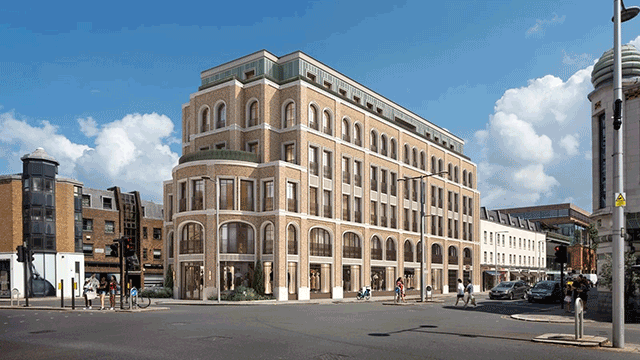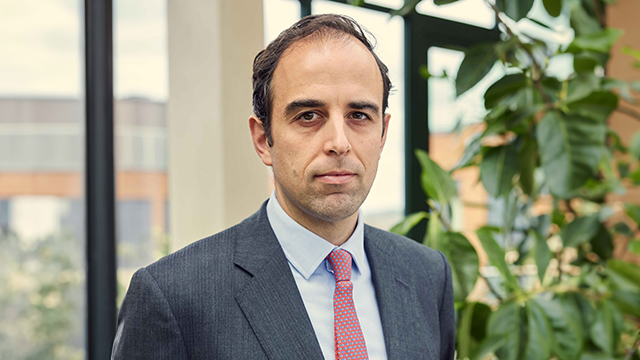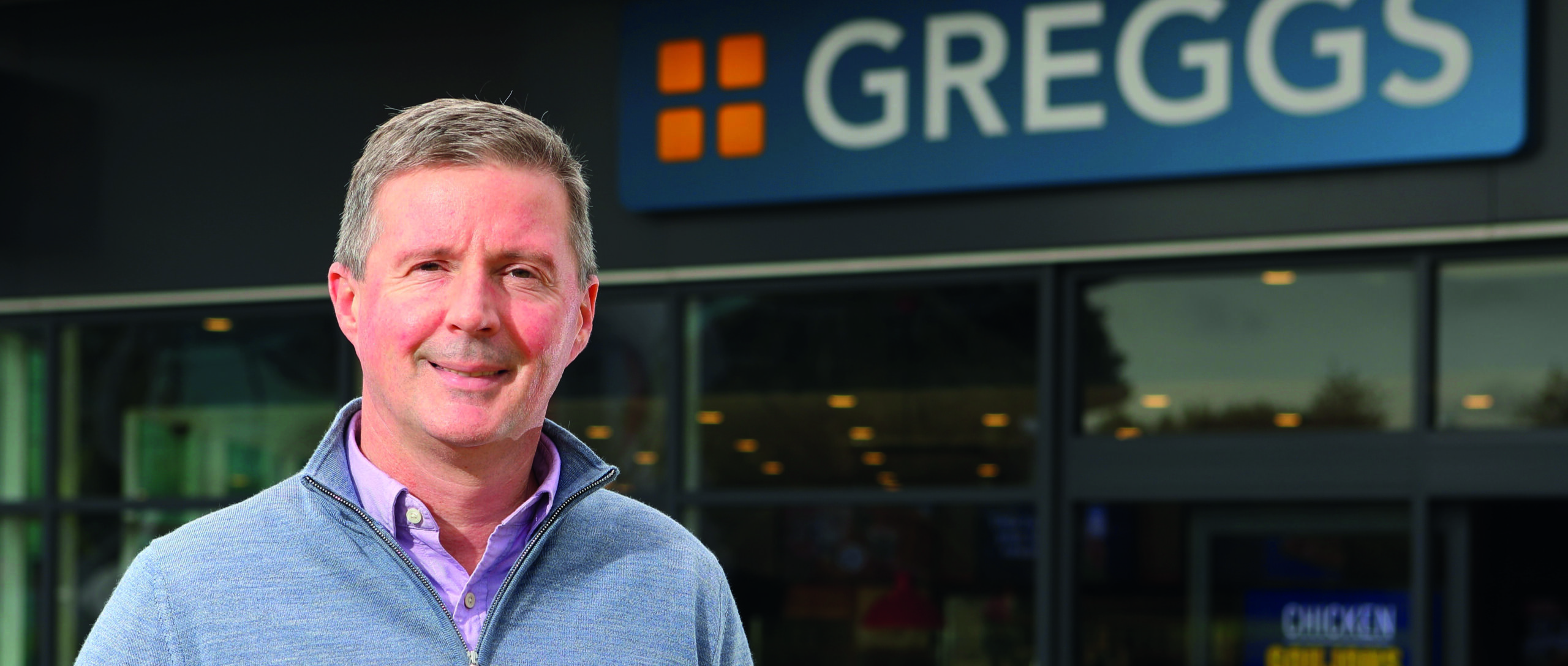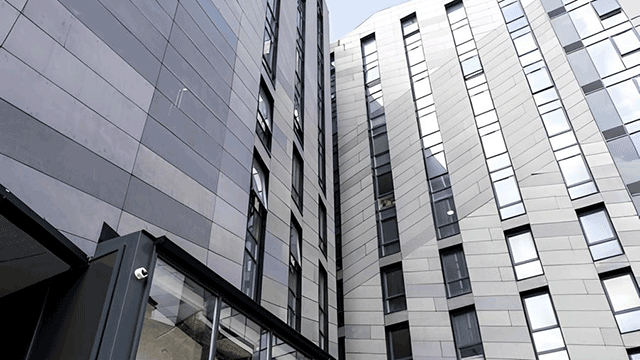“We had a bit of a milestone back in 2019,” says Tony Rowson, property director of food-on-the-go chain Greggs.
A “bit” is a bit of an understatement. Until then, when a tweet about the chain introducing a vegan sausage roll went viral – thanks in part to Piers Morgan being Piers Morgan – people’s perception of Greggs – property’s too – was that it was a bit cheap and a bit nasty.
But it’s not, says Rowson. It is value-focused and, he believes, is fast becoming both the people’s favourite and real estate’s.
Greggs has a long history with the high street. The firm was launched in 1939 by John Gregg, who began delivering fresh eggs and yeast to families across Newcastle on his bicycle. After a decade on the bike, he opened his first bakery – Greggs of Gosforth.
That store is still part of the portfolio, and Greggs now has more than 2,200 sites across the UK and an ambition to add 150 net new stores a year until 2026, with an ultimate goal of at least 3,000.
Finding those stores and growing the business is Rowson’s job. In February, after 10 years with the business in which he largely looked after its southern estate, Rowson was promoted to property director, a role previously held by now chief executive Roisin Currie.
It’s a big job and one that comes with some high stakes. Greggs plans to double its turnover from £1.2bn in 2021 to £2.4bn by 2026 and it expects at least half of that growth – some £600m – to be driven by new shops.
“New shops is a key part of our strategy, so the role I’m now playing is quite a big part of that,” says Rowson as he takes a big gulp of his Greggs flat white.
But he doesn’t seem nervous about achieving that goal. While he is still considered “a baby” in terms of Greggs tenure – “If you do a year here, you stay for life,” he says – he is fully invested in the Greggs story and he knows he can sell it.
Rowson says there has been a huge change of perception when it comes to Greggs – and that vegan sausage roll tweet has certainly helped with that.
“Historically, Greggs has been perceived as cheap and the quality not being great, when, actually, we are great value and the quality is extremely good,” says Rowson. “We have had a few closed doors. Landlords may have said beforehand that they don’t see a Greggs in their environments but we have got through that door. We have had a change of position.
“We have shown that we can evolve, we can reshape and we can change, so I think landlords know we are a good company to have,” he adds.
A bite of the market
That evolution started way back in the late 1990s and early 2000s when Greggs was principally still a bakery. But as the supermarket bread wars waged on, with the big chains trying to out-cheap each other, Greggs had to transform and move away from being a high street bakery to becoming one of Britain’s best-loved value food-on-the-go operators.
“It was a war that we could have stayed in but probably ultimately lost,” says Rowson. “Or we could have moved into something that was growing and expanding. Food and coffee was a growing market and simple logic told us to transfer into that kind of environment. What it did mean, however, was that not necessarily all of our locations were ideal food-on-the-go locations.”
That has meant that alongside the goal of opening 150 net new stores every year until 2026, Greggs has also been re-siting and reshaping its portfolio.
The Greggs of old was a quick grab-and-go of a loaf of bread. Today it needs to serve multiple purposes. It still needs to offer grab-and-go but also click-and-collect and, increasingly, somewhere to sit.
While the high street remains an “incredibly strong and important part of the portfolio”, Rowson says Greggs’ traditional stores of around 800 sq ft just aren’t big enough for the expanded offer. The firm plans to re-site around 50 high street stores a year to larger units of 1,500-1,600 sq ft.
It is also targeting growth in travel hubs – both airports and train stations – and London. It currently has just 14 shops in central London, including the “mega location” at Leicester Square, W1. At its capital markets day last year, Greggs outlined market size in London of as many as 200 locations.
Areas accessible by car will also form part of that growth story, says Rowson. Retail parks have been a huge growth area. So too have industrial estates.
Drive-thru Greggs are a particular focus area, he adds, which has been accelerated by the pandemic. He says the business is in the early stages of expansion but has built a portfolio of 15 drive-thrus and is hungry for many more. It is targeting sites of 1,800-2,000 sq ft for drive-thru locations, complete with EV chargers.
“I mean, if you’re charging for 20 minutes or half an hour, I can’t think of anything better to do than pop into a Greggs and have a flat white and bacon roll before you get back on the road,” says Rowson with a smile.
It is easy to have a bit of a laugh when you think about Greggs. Its social media marketing is silly and light-hearted, its collaboration with Primark to not only open its biggest store – the Tasty by Greggs at Birmingham’s Primark is a 140-seater – but to produce Greggs-branded clothing (and Crocs) is beautifully bizarre. But there is also something serious about Greggs. Talking to Rowson, it is clear the business takes its value offer very seriously. It really does want to offer good food at affordable prices. Especially now as families up and down the country struggle in the cost-of-living crisis.

High stakes
In February 2021, Greggs revealed its Greggs Pledge, a promise to do its bit to save the planet and help communities.
Chief among the targets within that pledge is opening 50 Greggs Outlets by 2025. Outlets are based in areas of high deprivation and offer food at much reduced prices. The firm is well on its way to achieving its goal, with 27 stores open already and three more opening within the next few months.
Rowson says the outlets serve a multitude of purposes, both environmental and societal. Greggs sandwiches are made fresh on site every day. At the end of the day, unsold sandwiches could go to waste. For many chains they do. But at Greggs it is redirecting this “waste”, which Rowson says is still perfectly tasty, to outlet stores. In 2021, some 880 tonnes of product was redistributed through outlet shops.
Profits from the stores also go into the Greggs Foundation and are then used to provide support to local charities. In 2021, the outlets raised around £370,000 for charity.
“These aren’t just shops,” says Rowson. “These are community hubs. We work with the community to understand what some of the local charities are that support the community and how profit from that shop can help produce grants for that.”
He adds: “This is hugely important to us. People at Greggs stay a long time because of the values we have about doing business in the right way. I fell in love with that. It’s one of the reasons I’m so excited about working here.
“As a business we have never really shouted about how we work and operate, but those values have always been in our business.”
The business has also opened its first eco shop. The store, in Great Billing, Northampton, opened in July and is serving as a test bed for how the business can meet its sustainability targets of “being well on its way” to carbon neutrality, reducing its waste and packaging and sourcing sustainably by 2025.
It is trialling 30 initiatives at the store, such as recyclable flooring, cistern-less and air-assisted toilets, eco-ovens, heat pump air curtains and solar-control glass. All of the initiatives are focused on waste management, water reduction or overall energy reduction
Rowson says that a few months in there are some good results from the test store and the business has already started rolling out some ideas to new and refitted stores. By 2025, Greggs wants a quarter of its shops to feature eco elements.
There is a lot for Rowson to achieve over the next three to four years. He has to add around 800 shops to the portfolio, he has to help “level up” some poorer areas of the country that will inevitably suffer more in the current economic climate, and he has to save the planet.
But he has the hunger and appetite to succeed. He believes that there are huge opportunities available to Greggs to expand.
“We were in a position where a landlord might say ‘over my dead body would I have a Greggs in my scheme’ through to now where we are their number one company to bring in,” says Rowson. “Our presentations now are about the look and feel of our shops, about our range and why we are popular. From a landlord’s perspective, they get stuck on a couple of those slides because they just didn’t know Greggs operated in that way and had those values.”
The vegan sausage roll might have been the milestone that enabled Greggs to have a record year in 2019, bringing lapsed customers back and inspiring a new generation to give Greggs a go. But in 2022, where value and values have never been more important to customers, a new milestone may well have just been set.
To send feedback, e-mail samantha.mcclary@eg.co.uk or tweet @samanthamcclary or @EGPropertyNews











